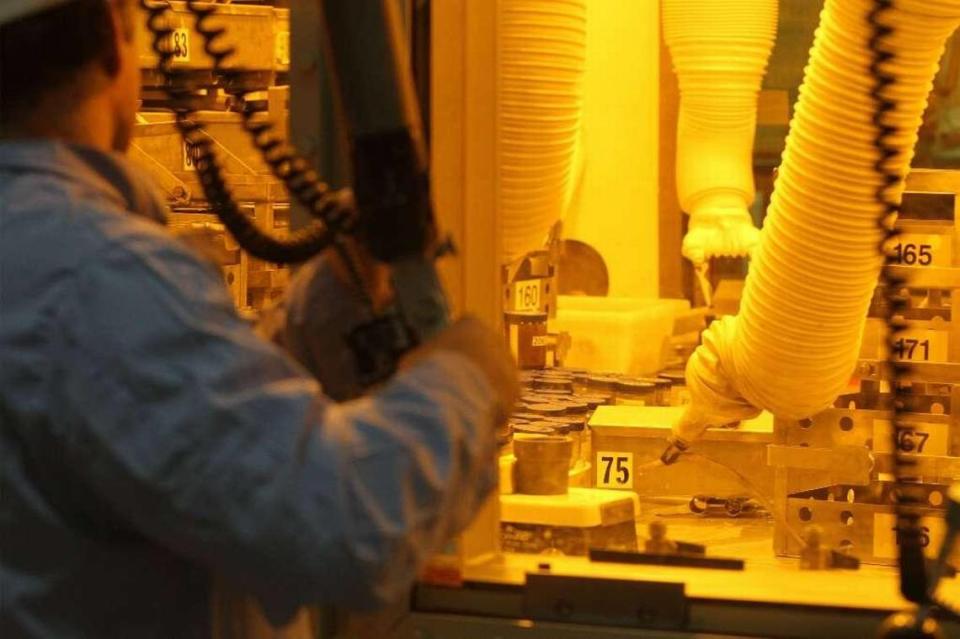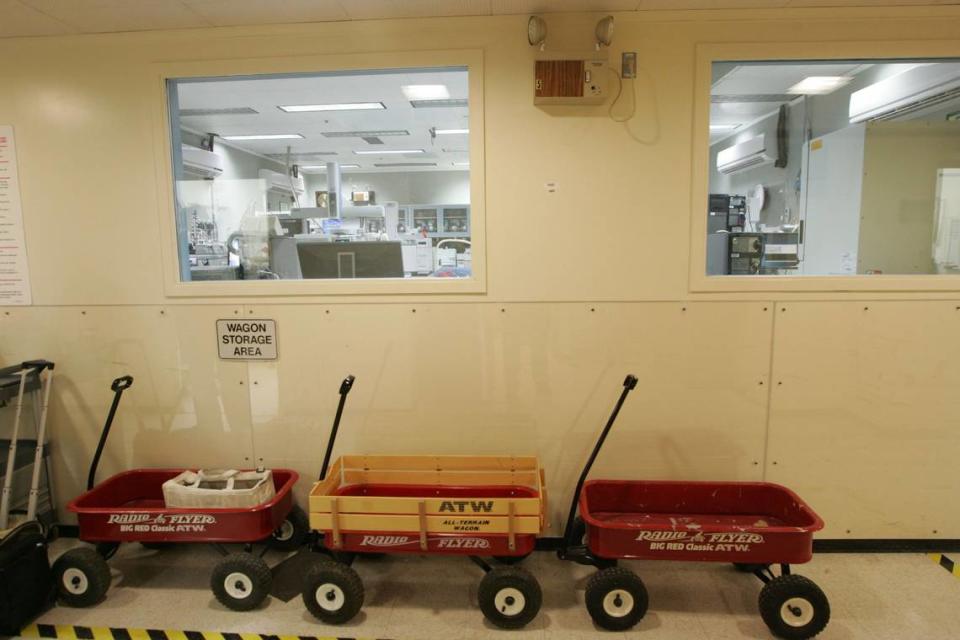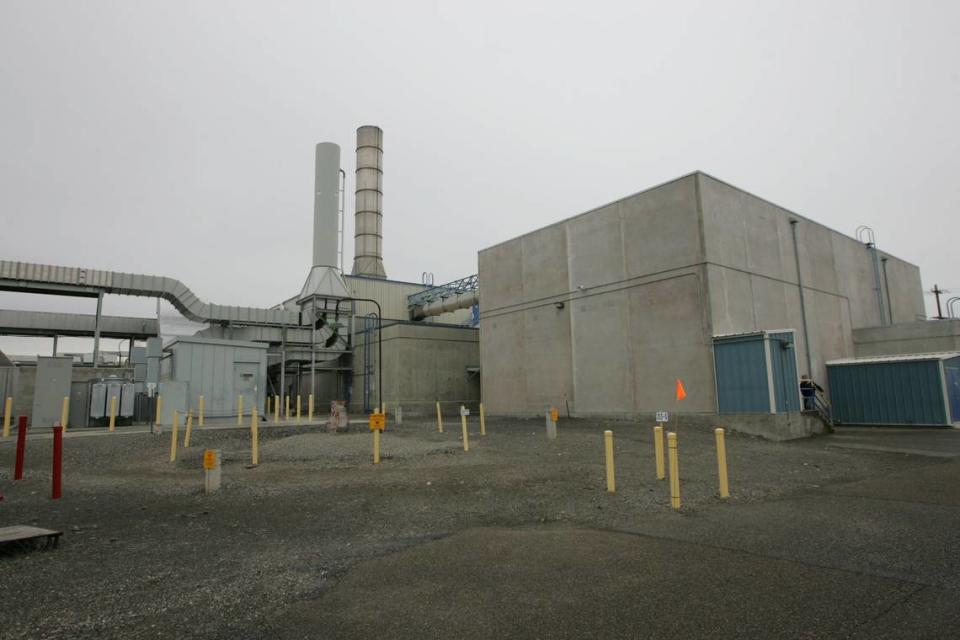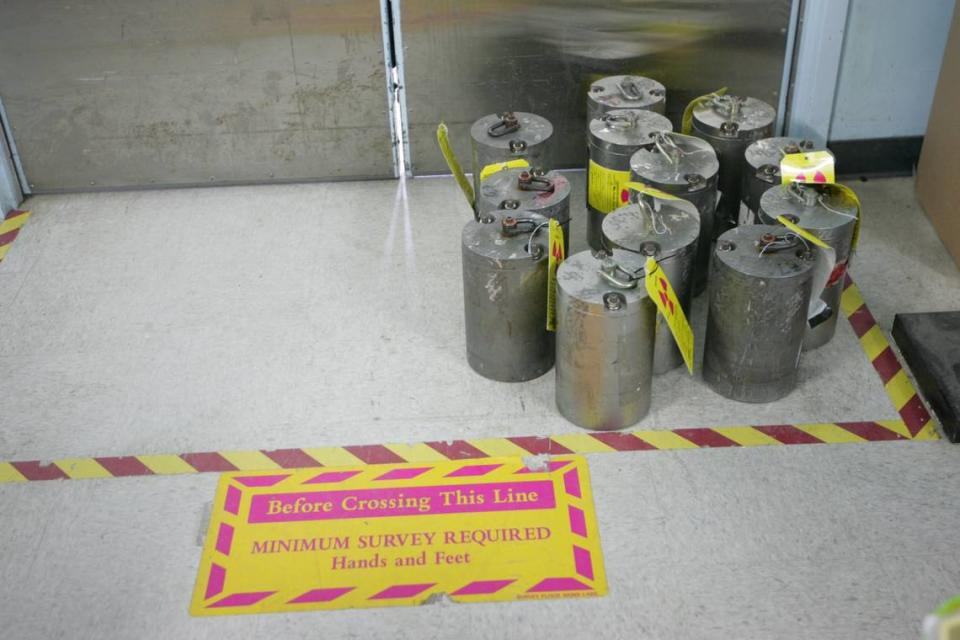Update: Bomb squad called for ‘extremely dangerous’ chemical at Hanford nuclear site lab
A dangerous chemical that needed to be removed from a large laboratory on the Hanford nuclear reservation was safely retrieved and destroyed by the Richland Police Department’s bomb squad.
Specially-trained squad members were called to the site north of the city on Tuesday afternoon over concerns about a dangerous chemical.
About 50 to 60 employees were evacuated from part of the 222-S Laboratory out of an abundance of caution, according to the federal Department of Energy. The lab is on a non-public part of the nuclear reservation in Eastern Washington.
An employee in the lab had opened the outer container that held a vial of the chemical crotonaldehyde to stabilize it for shipment to an offsite treatment, storage and disposal facility, according to DOE.
The employee noticed what appeared to be crystals that had formed on the vial, which was inside another clear container. The vial was mostly empty with about a thimble-full of the chemical at the bottom.
The Safety Data Sheet for crotonaldehyde states that it reacts with air to form peroxides. When crystals form in a peroxidizable liquid, peroxidation may have occurred, and the product should be considered extremely dangerous, according to DOE.

Richland police arrived to remove the chemical from the laboratory and took it off site Tuesday afternoon and destroyed it at the police department’s field range, said police.
No one at Hanford was exposed to the chemical and no medical evaluation was needed. There also was no release of the material that would have required cleanup, according to DOE.
The incident began a little after 1 p.m. and operations returned to normal at the lab about three hours later.
No information was available about why the lab had the chemical, how it may have been used and where it was planned to be sent for treatment and disposal.
The 222-S Laboratory is used to analyze highly radioactive waste samples, primarily waste stored in underground tanks from the past chemical processing of irradiated uranium to remove plutonium for the nation’s nuclear weapons program.

The 580-square-mile Hanford nuclear reservation site adjacent to Richland was used from World War II through the Cold War to produce nearly two-thirds of the plutonium for the nation’s nuclear weapons program.
At the heart of the 222-S Laboratory complex is a 70,000-square-foot building with more than 100 pieces of analytical equipment, 156 fume hoods, 46 remote manipulators and 11 hot cells where workers operate handling equipment from outside the cells and look through thick, leaded glass to work with radioactive waste samples within the hot cells.
The complex also has several support buildings.

As of 2022 the laboratory employed about 275 workers.
Hanford Laboratory Management and Integration, owned by Navarro Research and Engineering and Advanced Technologies and Laboratories International, holds the Department of Energy contract to operate, manage and maintain the 222-S Laboratory.


